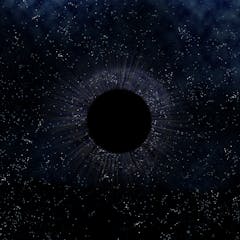
Articles on Dark matter
Displaying 1 - 20 of 93 articles

An exciting new experiment is being set up at Yale university in the US.

We may be able to find traces of dark matter star explosions.

Giant helium balloons are a cheap, more environmentally friendly alternative to rocket launches – and you get the satellite back.

After a decade studying thousands of supernovae, astronomers are still perplexed by the enigma that led Einstein to his ‘greatest mistake’.

The nature of dark energy remains one of the biggest puzzles in cosmology.

From improving our understanding of dark matter to revealing the location of Earth 2.0, the Extremely Large Telescope promises answers to some of the biggest scientific questions of our time.

The gravitational field can affect space and time: the stronger gravity is, the slower time moves. This prediction of General Relativity can be used to reveal hidden forces acting on dark matter.

Einstein’s theory of general relativity suggests that our universe originated in a Big Bang. But black holes, and their gravitational forces, challenge the limits of Einstein’s work.

To detect dark matter, you need to build an ultra-sensitive detector and put it somewhere ultra-quiet. For one physics collaboration, that place is almost a mile under Lead, S.D.

The Euclid mission is preparing to launch on July 1.

A spacecraft set to launch this year will throw a spotlight on the mysterious ‘dark side’ of the universe.

For decades physicists have argued over the nature of the elusive dark matter that pervades the Universe. A clever new study uses gravitational lensing to bring new evidence to the debate.

The most energetic events in the universe shower us with unbelievably energetic particles of light. Capturing these can help us to solve some enticing cosmic mysteries.

Astronomers have found that mysterious dark energy may originate in black holes.

By spotting and counting tiny galaxies, we can work out how much dark matter is hiding in the cosmos.

A glowing blob in the sky known as “the cocoon” may be caused by pulsars in the Sagittarius dwarf galaxy.

A comparison of star-forming galaxies suggests, surprisingly, that dark matter and visible matter do interact – taking us closer to understanding what keeps the galaxies together.

Regular matter makes up just one-sixth of all the matter in the universe. What would it mean to finally understand what makes up the rest?

Recent results cast doubt on dark matter.

There’s a perfectly good alternative to dark matter, but most scientists aren’t keen on the idea.
